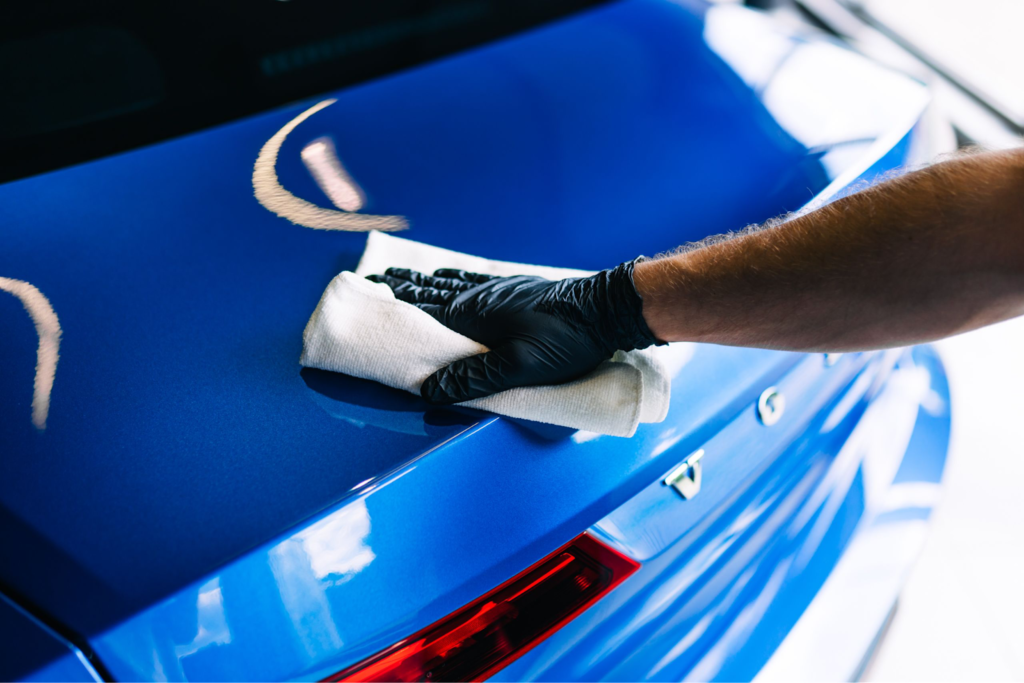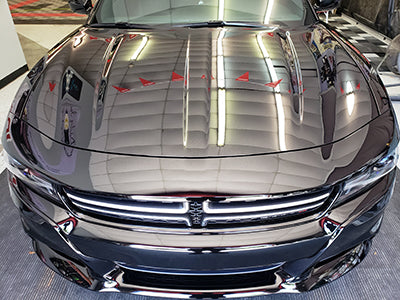Discovering Different Sorts Of Ceramic Coating for Different Vehicle Finishes
The Value of Ceramic Coating: Securing Your Automobile's Exterior With Precision
In an era where keeping the aesthetic and functional stability of your vehicle is extremely important, ceramic layer becomes a critical service. This safety layer not just defend against ecological misfortunes but also elevates the aesthetic appeal of your car. With its one-of-a-kind bonding residential or commercial properties, ceramic covering offers a degree of protection that far goes beyond conventional waxing approaches. Just how specifically does it achieve such exceptional outcomes? As we explore the subtleties of its application and contrast it to various other options, one can not help however ask yourself concerning the specifics that make this innovation essential for modern-day car care.
Advantages of Ceramic Coating
When it involves maintaining an automobile's aesthetic allure, ceramic covering provides considerable benefits. This innovative safety layer gives a durable shield against environmental pollutants, including dirt, gunk, and unsafe UV rays. By forming a semi-permanent bond with the vehicle's paint, ceramic layers properly prevent oxidation and fading, guaranteeing that the cars and truck preserves a glossy, showroom-like finish for a prolonged period. This not only enhances the vehicle's aesthetic allure however likewise adds to its long-lasting value.
In enhancement to its protective top qualities, ceramic layer offers remarkable hydrophobic homes, causing water and various other liquids to grain off easily. This function streamlines the cleansing process, as dirt and debris are much less most likely to follow the surface area, decreasing the regularity and effort needed for upkeep. Additionally, the coating's resistance to chemical discolorations from acidic contaminants like bird droppings and tree sap is an additional notable advantage, lessening potential paint damages.
Ceramic finishes additionally improve scrape resistance, offering a layer that can soak up minor abrasions and swirl marks. This feature is particularly useful in keeping a beautiful surface area, reducing the probability of noticeable imperfections and protecting the honesty of the automobile's paintwork with time.

How Ceramic Finish Functions
Understanding the auto mechanics behind ceramic finish discloses its efficiency as a protective service for automobiles. Ceramic layers are essentially liquid polymer applications that chemically bond with an automobile's factory paint, developing a safety layer. This layer offers as an obstacle versus ecological impurities such as dust, crud, and ultraviolet rays, which can break down an auto's outside with time. The vital part in ceramic coating is silicon dioxide (SiO2), which stems from quartz crystals and is recognized for its exceptional hardness and resilience.
Application of ceramic finish includes a precise process. Originally, the automobile's surface should be thoroughly cleansed and decontaminated to ensure optimal attachment. As soon as applied, the liquid polymer forms a semi-permanent bond with the paint, hardening into a transparent, resilient shield. This shield improves the auto's gloss and hydrophobic properties, facilitating less complicated cleaning by creating water and contaminants to grain and slide off easily.
Furthermore, the layer's molecular structure gives resistance to minor scrapes and chemical spots. Unlike waxes or sealants that rest on top of the paint, ceramic finishes incorporate with the surface, offering lasting defense. This integration is essential to its performance, ensuring the automobile's coating stays immaculate for many years.
Contrasting Ceramic Coating to Alternatives
In the realm of automotive protection, ceramic finishing stands as a powerful alternative when contrasted to typical choices such as waxes and sealants. While waxes provide a short-term lustrous finish, generally lasting just a few weeks to months, ceramic finishes supply a longer-lasting option, often sustaining for many years. This toughness is credited to the chemical bonding that occurs when ceramic coverings are used, developing a strong layer that is immune to ecological hazards.
Contrastingly, sealers, although even more durable than waxes, still disappoint the durable defense used by ceramic finishes. Sealants can typically last for up to a year, providing an artificial shield against particular aspects. They lack the superior hydrophobic properties and UV security that ceramic coverings deliver.
Additionally, ceramic finishings offer boosted scratch resistance, which neither waxes neither sealants can effectively match (ceramic coating). This is especially useful in keeping an auto's excellent appearance. Furthermore, ceramic finishings streamline maintenance initiatives by reducing the over here adherence of dust and grime, consequently facilitating much easier cleaning. In recap, while traditional waxes and sealants use basic protection, ceramic finishings offer an extensive, lasting option that significantly preserves the lorry and boosts's outside finish.
Application Refine Clarified
Using ceramic finish to an automobile requires a precise procedure to make sure optimal outcomes and longevity. When cleaned, the vehicle is dried out and polished to eliminate any type of flaws, as any existing scratches or swirls can become more noticable after the finish is applied.
Adhering to surface prep work, the application of the ceramic covering starts. Making use of an applicator pad, the ceramic covering is used in tiny sections to make certain even coverage.
After application, the finish calls for a specific treating period, throughout which the lorry should be secured from water and impurities. This healing process can vary depending upon the product yet generally ranges from 24 to 48 hours. Eventually, this in-depth procedure is pivotal in achieving a shiny and resistant finish.
Maintenance Tips for Longevity
To maintain the longevity of a ceramic coating, adherence to a self-displined upkeep regimen is essential. Regular washing is paramount; use a pH-neutral automobile shampoo and soft microfiber gloves to avoid abrasions. Avoid automatic car washes, as their harsh brushes can compromise the layer's integrity. Instead, go with a hand clean to make certain comprehensive yet gentle cleaning.
Post-wash, drying the vehicle with a clean microfiber towel protects against water places that may degrade the coating with time. Furthermore, use a ceramic finishing booster every few months. These boosters enhance the hydrophobic residential or commercial properties and enhance the layer's safety abilities, ensuring it continues to be efficient find against impurities.
Remember that auto parking places play a vital role in upkeep. ceramic coating. Whenever possible, park in shaded locations to lessen UV exposure, which can progressively compromise the covering. For lasting storage, take into consideration utilizing a car cover for included protection against environmental components
Final Thought
In conclusion, ceramic finish acts as a critical protective layer for vehicle outsides, using resilient protection against environmental variables such as dust, uv, and grime rays. By creating a semi-permanent bond with the paint, it enhances aesthetic allure while protecting the vehicle's value. Its hydrophobic residential or commercial properties promote easier upkeep, identifying it from alternative safety approaches. Understanding the application process hop over to these guys and sticking to upkeep referrals are important for taking full advantage of the long life and performance of ceramic covering.
When it comes to preserving an automobile's aesthetic charm, ceramic covering provides significant advantages. By forming a semi-permanent bond with the car's paint, ceramic layers properly stop oxidation and fading, making sure that the cars and truck preserves a glossy, showroom-like coating for an extensive duration. Ceramic finishes are basically fluid polymer applications that chemically bond with a cars and truck's factory paint, creating a protective layer. In summary, while traditional waxes and sealers provide basic defense, ceramic finishings present an extensive, long-term remedy that substantially enhances and maintains the automobile's outside finish.
